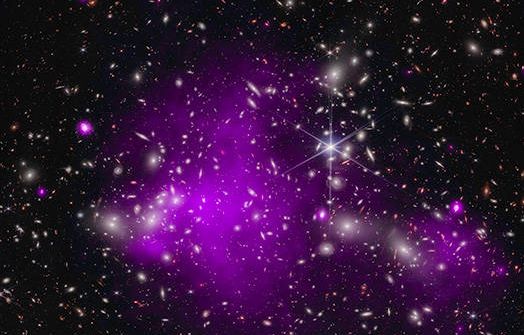A mysterious cosmic ray, a quantity of energy that panics scientists’ meters, a measurement in the Utah desert… No, this is not the pitch of the new popular science fiction novel, but well reality, invisible to the naked eye we grant you that.
A very high energy cosmic ray was detected by experts, at a level rarely reached: 240 exa-electron-volts (i.e. 240 and 18 zero behind in electron-volts), more than a million times higher than that obtained by artificial particle accelerators, as recalled by a scientific study on the phenomenon, published on November 23 in review Science. 20 minutes takes you very high and very far to try to unravel the mysteries of this phenomenon with the analysis of Vincent Tatischeffresearch director at CNRS.
What is a cosmic ray?
To get an idea of the phenomenon, we must look at two aspects: the composition of the cosmic ray, and its path through space. Cosmic rays contain “charged particles (protons, helium nuclei, nuclei of heavier atoms, etc.) which come from the cosmos, from space, but also from the sun. They wander through our galaxy and even beyond,” explains our expert.
Some arrive in the solar system, and even at Earth level, like the powerful cosmic ray detected in 2021 in the Utah desert and named Amaterasu, after the goddess of the sun in Japanese mythology. To detect these phenomena, it is necessary to have “instruments with large collection areas”, notes the study on Amaterasu published in Science. This is the case in the Utah desert, with the Array telescope.
Is the measurement taken reliable?
The counters panicked in 2021, to estimate that Amaterasu was the second most energetic cosmic ray ever recorded, after the aptly named “Oh my god” detected in 1991, as recalled the university of Utah.
In addition to the American observatory, there is another detector to measure cosmic rays: the Pierre-Auger observatory, in Argentina. And the analysis of the two schools clashes. “The two observatories detect these cosmic rays but they do not agree on the exact measurement of their energy,” confides our specialist. The flux of ultra-energetic cosmic rays is of the order of one particle per century and per square kilometer of detector. The Utah network covers an area of 700 square kilometers. It should therefore detect around 700 ultra-energetic cosmic rays per century. »
The less energy the cosmic ray is endowed with, the more the detection frequency accelerates. “In energy, there are 14 orders of magnitude. Flow level, there are 30. Lower energy particles are much more frequent, of the order of several per second and per square centimeter,” adds our expert.
Where does this mysterious cosmic ray come from?
For now, Amaterasu poses more questions than it answers, particularly regarding its provenance. The authors of the scientific publication in Science tried to trace the origin of the ray. Without success.
They deduced that the cosmic ray comes from a sort of no man’s land in space, without really an identified galaxy or massive black holes. A conclusion which calls for caution, according to our expert. “We don’t really know the composition of Amaterasu, but it gives indications on the path of the ray. There is also uncertainty in the calculation of its energy. Finally, charged particles are deflected by the magnetic field of our galaxy. But we have uncertainty about the structure of the field, and therefore about the direction of arrival.”
Other hypotheses on the origin of cosmic rays are being explored by scientists. With matter “accreted” by massive black holes at the centers of galaxies, the formation of “very high-speed jets of matter” could produce cosmic rays. Another track: “Very active galaxies with lots of stars forming and exploding. Perhaps in the activity of these galaxies there may be very high energy cosmic rays that can be produced,” concludes our expert. One thing is certain. It is by discovering and analyzing rare cosmic rays like Amaterasu that researchers will solve the mystery.

